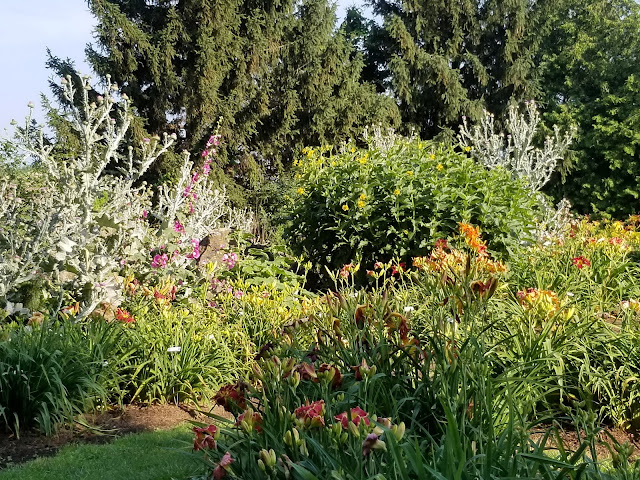T is for Tillandsia
Tillandsias, or Air Plants, have recently become a lot more popular. Admittedly this member of the bromeliad family is pretty cool, so that popularity is well deserved. I remember seeing them for sale in shells on Florida vacations when I was a kid. I was fascinated with how they didn't need soil and didn't seem to have roots to get water.
With over 500 species there is lots of variety on the market. Tillandsias are the most widely dispersed of the bromeliads. They are found in North, Central and South America in a variety of environments (rain forests, beaches, and deserts) and in almost any exposure. They can grow on tree trunks, branches, shrubs, cacti, and rocks. They also range in size, anywhere from 1 to 40 inches.
These plants seem to defy everything we know about plants. How do they get nutrients and water? They actually do have small roots, that are mainly for stabilization rather than supplying the plant with nutrients or water. Tillandsias need to be misted with water regularly, and can benefit from being soaked in water if needed. Mounted plants need to be drenched regularly since they dry out more. They can be fertilized twice a month with a diluted acidic fertilizer while actively growing. It just needs to sprayed onto the leaves. They like bright light and some can take almost full sun. Plants that have hard, thick, gray leaves tolerate more light than the green/gray-green thinner leaves.
Most tillandsias are mounted to something, like the wood ours are attached to, or the shells from my Florida vacations. There are few different ways to mount tillandsias. Some folks use mono-filament and others use an adhesive. We used E600 to mount ours. We joke that you E600 will attach anything to anything, and it hasn't let us down.
There are even three species native to Texas (baileyi, recurvata, and usneoides). I was honestly surprised when I read this, since I have always thought of them as being more tropical. Tillandsia baileyi is also know as Giant Ball Moss and is hardy to zone 9 and 10. It is only found along the gulf coast of Texas. Tillandsia recurvata, or Small Ball Moss, is hardy to zone 8b-10. We have seen it locally at a botanical garden in the area. Tillandsia usneodies is also know as Spanish Moss. I'm sure most gardeners are familiar with this one. While all of these are technically Tillandsia, they are probably not what most people think of when they think of a Tillandsia.

This isn't a plant that you can build a garden around, but they make a great accent and conversation piece. Definitely something fun to add to your plant collection!






Tillandsias continue to be popular in this area too and just about every nursery has a large display of them. Your tillandsia log is cool!
ReplyDeleteThanks! It actually used to be a log for my husband's iguana when he was in college.
DeleteMy poor Tillandsias are treated with far less care that yours. I tend to throw them into pots as top-dressing of a sort for other plants and leave them to survive (or not) on whatever water the pot receives. I do like them, though. If I ever invest in one of the more expensive varieties, I'll have to become more conscientious about their care.
ReplyDeleteThis is the first time we really got serious about taking care of them. We got a few interesting ones from someone in the daylily society (traded some elephant ears) and we figured we needed to step up our game a little.
DeleteI love Tillandsias! Unfortunately, no matter if I hang them on a tree, or on a slab of bark on the porch, the squirrels will chew them up. They think they are candy. The ball moss they leave alone for some odd reason. Maybe they taste bitter! I wish I could grow them but after 3 tries I've given up. I loved the photos! David
ReplyDeleteRight now our squirrels are VERY preoccupied with the pecans on our pecan tree...they're like little drug addicts. I'll have to keep my eye on the situation when the pecan-mania slows down.
Delete